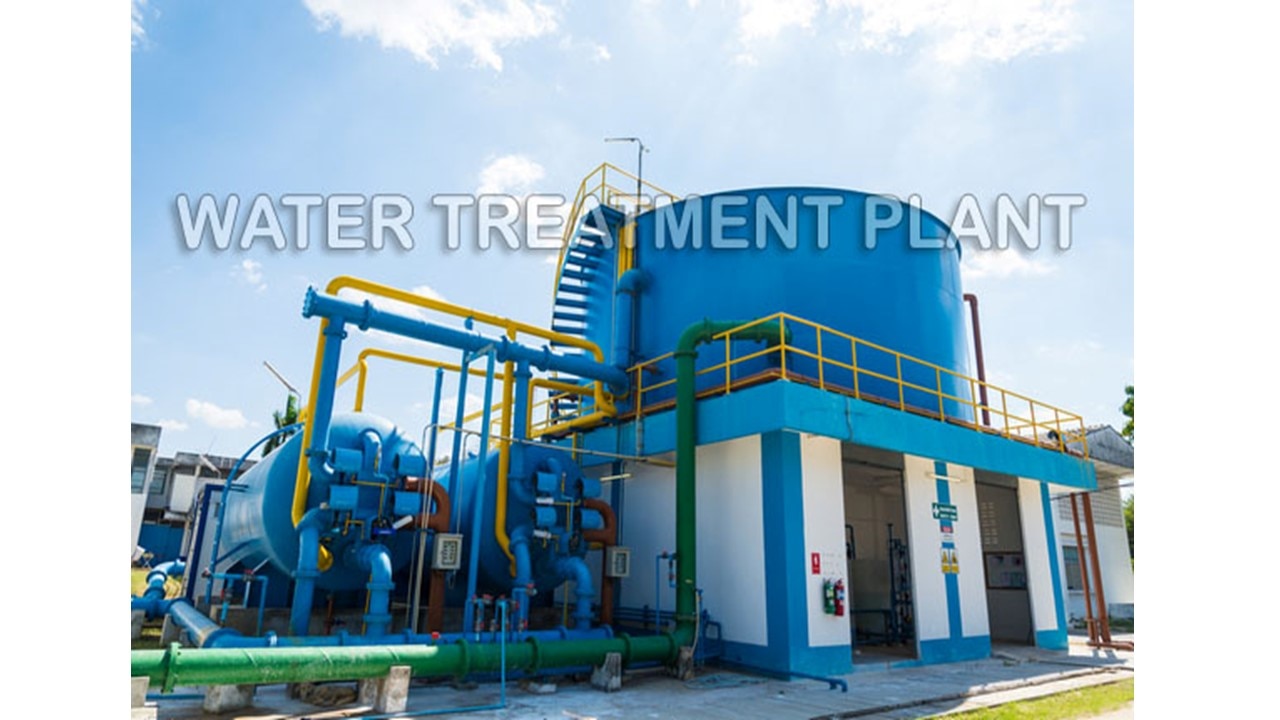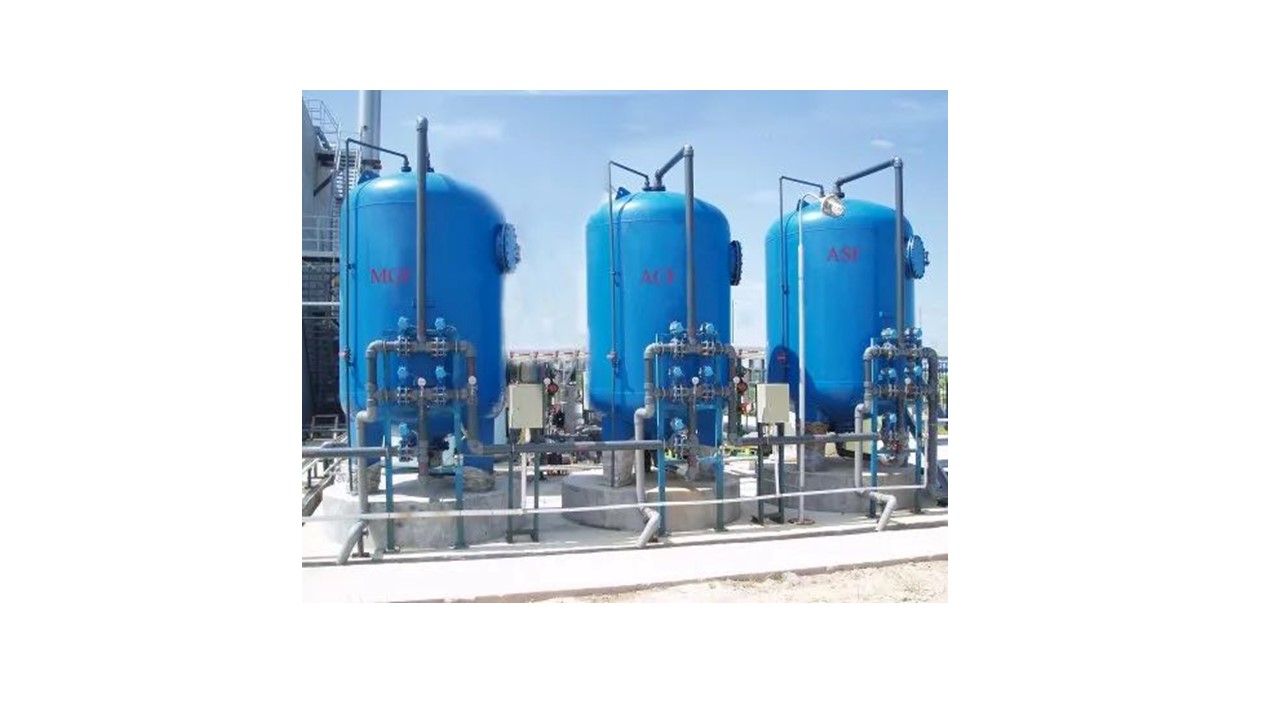Description
Product details
Water treatment is any process that improves the quality of water to make it appropriate for a specific end-use. The end use may be drinking, industrial water supply, irrigation, river flow maintenance, water recreation or many other uses, including being safely returned to the environment. Water treatment removes contaminants and undesirable components, or reduces their concentration so that the water becomes fit for its desired end-use. This treatment is crucial to human health and allows humans to benefit from both drinking and irrigation use. Industrial water treatment Water treatment is used to reduce impact on equipment used in industrial processes, such as heating, cooling, processing, cleaning, and rinsing so that operating costs and risks are reduced. Poor water treatment lets water interact with the surfaces of pipes and vessels which contain it. Steam boilers can scale up or corrode, and these deposits will mean more fuel is needed to heat the same amount of water. Cooling towers can also scale up and corrode. Water treatment is also used to improve the quality of water contacting the manufactured product (e.g., semiconductors) and/or can be part of the product (e.g., beverages, pharmaceuticals). For the elimination of hazardous chemicals from the water, many treatment procedures have been applied. The processes involved in removing the contaminants include physical processes such as settling and filtration, chemical processes such as disinfection and coagulation, and biological processes such as slow sand filtration. Chemical Tanks with sand filters to remove precipitated iron (not working at the time) Different chemical procedures for the conversion into final products or the removal of pollutants are used for the safe disposal of contaminants. Pre-chlorination for algae control and arresting biological growth. Aeration along with pre-chlorination for removal of dissolved iron when present with relatively small amounts of manganese. Disinfection for killing bacteria, viruses and other pathogens, using chlorine, ozone and ultra-violet light. Physical Physical techniques of water/waste water treatment rely on physical phenomena to complete the removal process, rather than biological or chemical changes. Most common physical techniques are: Sedimentation is one of the most important main wastewater treatment procedures. Gravity settling is a method of separating particles from a fluid. The particle in suspension remains stable in quiescent conditions due to the decrease in water velocity throughout the water treatment process, following which the particles settle by gravitational force. For solids separation that is the removal of suspended solids trapped in the floc. Filtration is the technique of removing pollutants based on their particle size. Pollutant removal from waste water permits water to be reused for a variety of purposes. The types of filters used in the procedure differ depending on the contaminants present in the water. Particle filtration and Membrane filtration are the two main forms of waste water filtration. Dissolved air flotation (Degasification) is the process of removing dissolved gases from a solution . Henry's law states that the amount of dissolved gas in a liquid is proportionate to the partial pressure of the gas. Degasification is a low-cost method of removing carbon dioxide gas from waste water that raises the pH of the water by removing the gas. Deaerator is used to reduce oxygen and nitrogen in boiler feed water applications. Physico-chemical Also referred to as 'Conventional' Treatment Coagulation for flocculation. The addition of coagulants destabilizes colloidal suspensions by neutralizing their charges, resulting in the aggregation of smaller particles during the coagulation process. Coagulant aids, also known as polyelectrolytes – to improve coagulation and for more robust floc formation. Polyelectrolytes or also known in the field as polymers, usually consist of either a positive or negative charge. The nature of the polyelectrolyte used is purely based on the source water characteristics of the treatment plant. These will usually be used in conjunction with a primary coagulant such as ferric chloride, ferric sulfate, or alum. Chemical precipitation is a common process used to reduce heavy metals concentrations in wastewater. The dissolved metal ions are transformed to an insoluble phase by a chemical interaction with a precipitant agent such as lime. In industrial applications stronger alkalis may be used to effect complete precipitation. In drinking water treatment, the common-ion effect is often used to help reduce water hardness. Flotation uses bubble attachment to separate solids or dispersed liquids from a liquid phase. Membrane filtration Membrane filtration can remove suspended solids and organic components, and inorganic pollutants such heavy metals. For heavy metal removal, several forms of membrane filtration, such as ultrafiltration, nanofiltration, and reverse osmosis, can be used depending on the particle size that can be maintained. Aminophosphonates can be added for antiscalant properties to maintain filtration. Ion exchange Ion exchange is a reversible ion exchange process in which an insoluble substance (resin) takes ions from an electrolytic solution and releases additional ions of the same charge in a chemically comparable amount without changing the resin's structure. Electrochemical treatment techniques Electrodialysis (ED) Membrane electrolysis (ME) Electrochemical precipitation (EP) Adsorption Adsorption is a mass transfer process in which a substance is transported from the liquid phase to the surface of a solid/liquid (adsorbent) and becomes physically and chemically bonded (adsorbate). Adsorption can be classified into two forms based on the type of attraction between the adsorbate and the adsorbent: physical and chemical adsorption, commonly known as physisorption and chemisorption. Activated carbon Activated carbons (ACs) or biological-activated carbon (BAC) are effective adsorbents for a wide variety of contaminants. The adsorptive removal of color, aroma, taste, and other harmful organics and inorganics from drinking water and wastewater is one of their industrial applications. Both a high surface area and a large pore size can improve the efficiency of activated carbon. Activated carbon was utilized by a number of studies to remove heavy metals and other types of contaminants from wastewater. The cost of activated carbon is rising due to a shortage of commercial activated carbon (AC). Because of its high surface area, porosity, and flexibility, activated carbon has a lot of potential in wastewater treatment. Biological This is the method by which dissolved and suspended organic chemical components are eliminated through biodegradation, in which an optimal amount of microorganism is given to re-enact the same natural self-purification process. Through two distinct biological process, such as biological oxidation and biosynthesis, microorganisms can degrade organic materials in wastewater. Microorganisms involved in wastewater treatment produce end products such as minerals, carbon dioxide, and ammonia during the biological oxidation process. The minerals (products) remained in the wastewater and were discharged with the effluent. Microorganisms use organic materials in wastewater to generate new microbial cells with dense biomass that is eliminated by sedimentation throughout the biosynthesis process.






